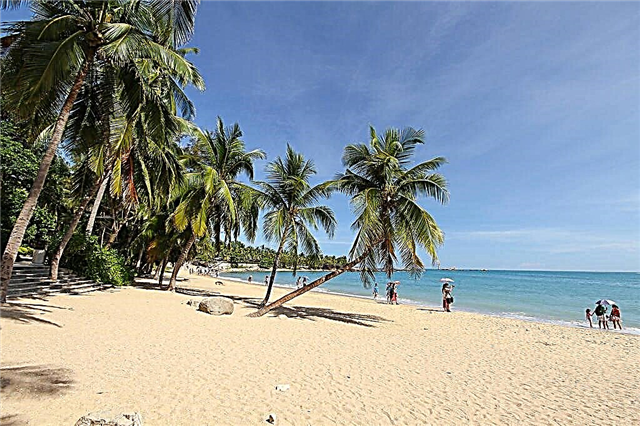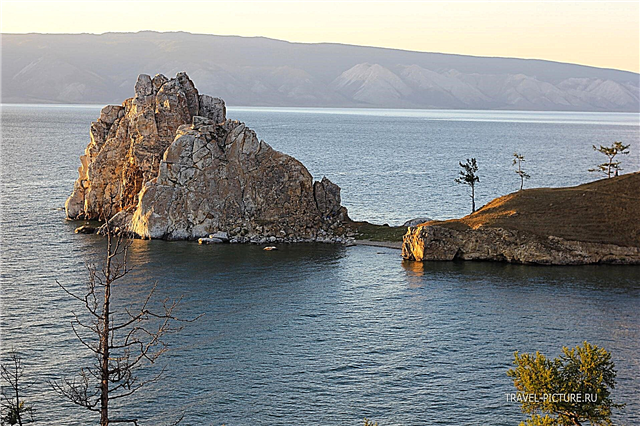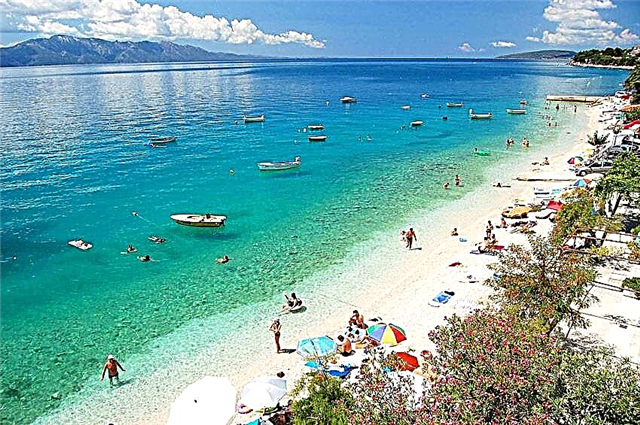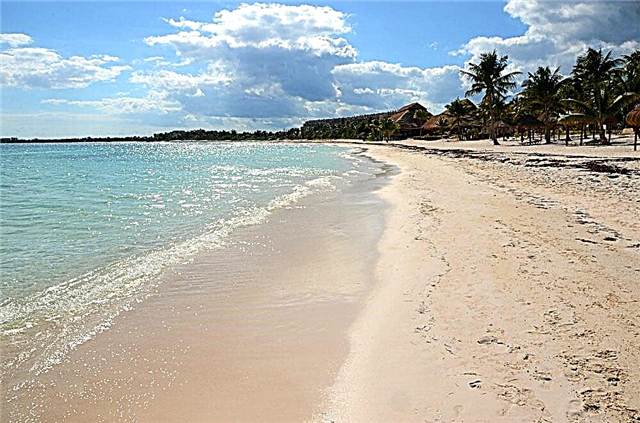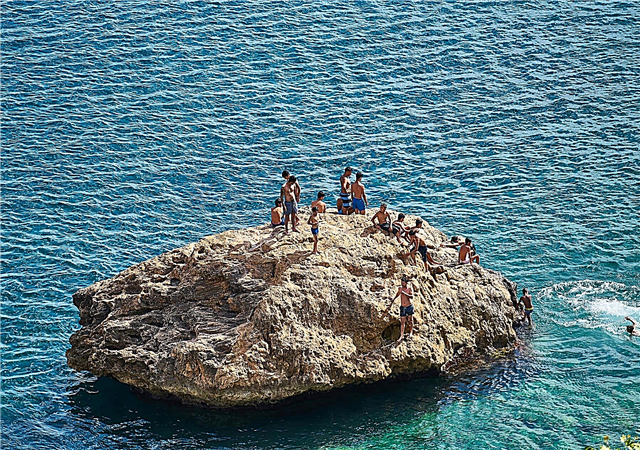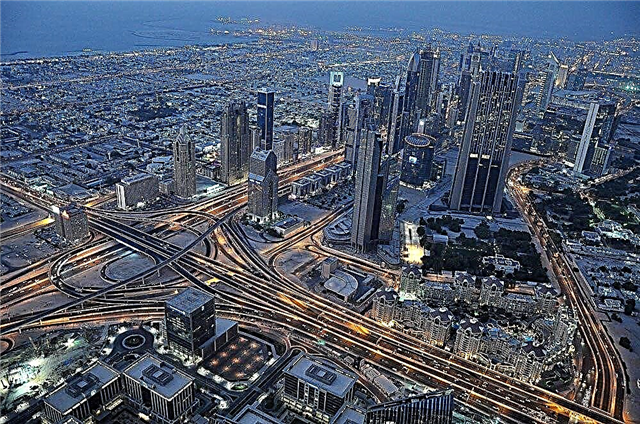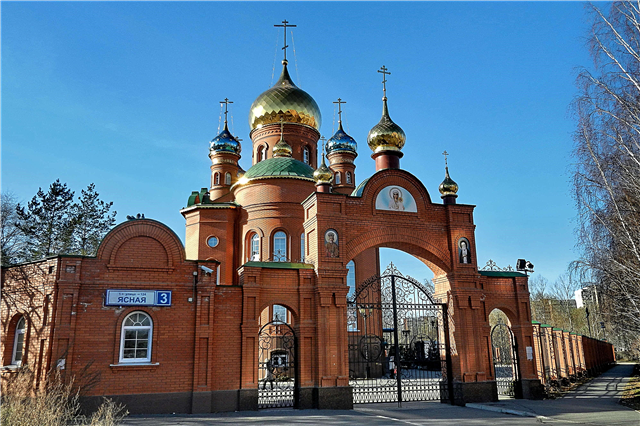Since the founding of Yekaterinburg in 1723, many churches and temples have been built in the city. Some large cathedrals were blown up during the Bolshevik regime, but since the early 2000s, there has been a tendency towards the revival of Orthodoxy and the restoration of lost historical and architectural monuments. Today's Yekaterinburg is not only a developed administrative, economic and cultural center, but also the spiritual capital of the entire Ural Federal District.
After the canonization of the royal family, Ganina's pit acquired special importance for all Orthodox Russians, where in 2000 a monastery was founded in honor of the Holy Royal Passion-bearers. Every year, on the anniversary of the execution of the royal family, thousands of pilgrims and tourists come here. In the past two decades, many new churches have been erected in Yekaterinburg, which organically fit into the architectural outline of the city and complement the list of attractions.
Operating churches and cathedrals in Yekaterinburg
List of the most famous and beautiful temples in the city.
Temple on blood
The construction of the third "on blood" church in Russia was completed in 2003. The Church-on-Blood in the name of All Saints who shone in the Russian land was erected on the site of the house of engineer Ipatiev, demolished in 1977, in the basement of which members of the royal family were shot in July 1918. The five-domed temple was built in the Byzantine style and has a height of 60 meters. Near the temple there is a monument to the royal family and a monument to the patrons of marriage, Peter and Fevronia. There is a chapel and the Patriarch's courtyard nearby.

Temple in the name of St. Nicholas the Wonderworker
The house church in the name of St. Nicholas is part of the building of the Patriarchal Compound spiritual and educational center, built in 2003 simultaneously with the Church on the Blood. The five-domed temple is dedicated to the patron saint of the last Russian emperor. The painting was carried out by masters from the icon-painting workshop of T.F.Vodicheva, famous in the Urals. The main shrine of the temple is the myrrh-streaming icon of the Holy Royal Passion-bearers.

Holy Trinity Cathedral
It is rightfully considered the main temple of Yekaterinburg. It was erected in the first half of the 19th century at the expense of the well-known businessman and Old Believer Ya.M. Ryazanov, therefore its second name is Ryazanovskaya Church. In 1930, the temple was closed and retrained into a cinema, club and other institutions. At the end of the 20th century, the temple was restored and returned to believers in the status of a cathedral. The shrine of the temple is the icon of the Great Martyr Catherine with a particle of relics.

Temple of the Lord's Ascension
The oldest surviving temple in Yekaterinburg was founded in 1770 as a small wooden church. The construction of a stone church in the late Baroque style began in 1792. Since then, the building has been repeatedly completed and rebuilt, and by the beginning of the 20th century there were already 6 aisles. In the 20s of the last century, the temple was closed, and in the 90s, it was restored and returned to believers. Due to the well-chosen location, the Ascension Church is one of the main high-rise dominants of the city.

Temple "Big Chrysostom"
The atypical church-bell tower was built in the middle of the 19th century in the Russian-Byzantine style according to the project of V. Morgan. The temple began to be called large due to its height (77.2 meters), and Zlatoust - due to the fact that it housed a huge bell, the 4th largest in Russia. In 1930, the temple was blown up, and in 2006-2013 it was restored next to the old foundation. The temple has 5 domes, the central of which is crowned with a high three-tiered drum.

John the Baptist Cathedral
The church in honor of the Nativity of John the Baptist was built in the period from 1846 to 1860 at the expense of the merchant E.A. Telegin. In 1943, the only cathedral in the city, not closed by the Bolsheviks, was given the status of a cathedral. For the next several decades, it remained the main temple of the entire Urals. The shrines of the cathedral are the icon of St. Nicholas of Mirliki and icons with particles of the relics of St. John of Tobolsk and St. Catherine the Great Martyr.

Temple of Seraphim of Sarov
The construction of the temple in honor of Seraphim of Sarov began in 2001 and lasted for five years. The architects erected a three-story red brick temple, unusual for the city, topped with gilded and blue domes. The first floor is dedicated to the needs of the Orthodox sisterhood, the second is the baptismal room and the refectory, and the third floor is a prayer hall with a rich iconostasis and colorful frescoes.

Alexander Nevsky Cathedral
The construction of the cathedral in the name of the holy blessed prince Alexander Nevsky began in 1838 and lasted ten years. It was built on the territory of the Novo-Tikhvinsky monastery by the architect M.P. Malakhov in the classicism style. In 1930, the cathedral was closed, since 1942 its premises were used as a military warehouse, and later as a repository of exhibits of the local history museum. In the early 90s of the XX century, it was returned to believers.

Church in honor of the Nativity of Christ
The snow-white church with blue roofs and gilded domes was the first temple built in the city after the 1917 revolution. The temple began to be built in 1996, its opening took place just three years later and was timed to coincide with the celebration of the Nativity of Christ. Semicircular apses and arches give the building lightness and airiness, despite its considerable size. A sculpture of the Archangel Michael is installed next to the temple.

Chapel of St. Catherine
The five-domed Orthodox chapel was built for the 275th anniversary of Yekaterinburg in 1998. Funds for the construction were provided by the city's industrial enterprises and the Institute of History and Archeology charitable foundation. The chapel was erected on the site of the Catherine Cathedral, demolished in 1930, by the project of the architect A.V. Dolgov. In 2003, a capsule with earth from the Boldino estate near Moscow was placed in the chapel, where one of the founders of Yekaterinburg V. Tatishchev is buried.

Church of Saints Sergius of Radonezh and Elizabeth
The laying of the first stone of the future temple took place in April 2010, and it was consecrated already in 2014. The project of an unusual church-bell tower was developed by the Oranta design and engineering firm. Now St. Elizabeth's Church is the tallest in Yekaterinburg - its height together with the spire is about 77 meters. The temple resembles a candle in shape. On the upper tier of the bell tower, 12 bells weighing from 6 to 1140 kg are installed, on the lower tier it is planned to install heavier bells weighing up to 30 tons.

Temple of the Kazan Icon of the Mother of God
The construction of the white-stone Virgin of Kazan Church was carried out from 1815 to 1840. A huge Sampson bell, cast by Ural craftsmen, was installed on the bell tower of the temple. By the beginning of the 20th century, the Kazan Church had one of the largest parishes of over 3,500 people and was famous for its church choir. Since 1935, the temple was closed and was used as an orphanage, club, factory workshop. Blown up in 1974. In 2011, the temple was completely restored.

Temple of the healer Panteleimon
The idea of creating a temple in the name of the holy great martyr and healer Panteleimon belonged to a student of the medical institute and priest D. Baibakov, who was an intern at the regional psychiatric hospital. Through his efforts in 1993, the construction of a single-altar church with a belfry began on the territory of the hospital. The temple was consecrated in 2002. Five years later, 12 bells were purchased and installed at the expense of the parishioners.

Church of the Assumption of the Blessed Virgin Mary
In 1994, with the blessing of the ruling bishop, a single-altar church was opened in the dilapidated Rodina cinema in the Elmash district. It was consecrated in honor of the feast of the Dormition of the Theotokos.Another name is the Assumption House Church. The church contains particles of the relics of many revered saints, a stone from the tomb of the righteous Simeon of Verkhoturye and the myrrh-streaming image of the Mother of God "The Inexhaustible Chalice."

All Saints Temple
The Orthodox church was founded in 1886, the construction was carried out at the expense of the Yekaterinburg merchants A. Volkov and F. Mikhailov. In 1918, the temple burned, but it was quickly restored, and the walls of the temple were decorated with paintings based on the paintings of V. Vasnetsov's students. During the war years, the Church of All Saints was closed, then services were resumed until 1961, when the church was closed again. In the 90s, the Church of All Saints was restored, and it reopened its doors to the parishioners.

Church of the Transfiguration of the Lord
The Transfiguration Church stands on the site of the oldest wooden church in Yekaterinburg in the name of St. Nicholas of Mirlikisky. Unfortunately, the temple completely burned down in 1807, but two years later a new stone church with a late Baroque bell tower was laid. In the 30s, the temple was plundered and closed. The restoration of the Transfiguration Church began in 1995, and a year later divine services began in it.

Temple in the name of Saint Innocent Metropolitan of Moscow
In 2001, the building of an old 19th century mansion on the central avenue of the city was transferred to the Yekaterinburg diocese. On the second floor of the estate, it was decided to open an Orthodox church in honor of the Moscow Metropolitan Innokenty in Yekaterinburg. In addition to the prayer hall, the building houses a Sunday school, a rehabilitation center, a children's puppet club and other social organizations. The main shrines of the temple are the worship cross and the relics of St. Innocent of Moscow and Dalmat Isetsky.

Temple in the name of the Reigning Icon of the Mother of God
A beautiful blue church with green roof slopes and three gilded domes was built in 2008-2011 next to the Yekaterinburg railway station. It was here that the royal family was brought from Tobolsk to await their further fate. The main shrine of the church is the miraculous icon of the Mother of God "Reigning", which was revealed on March 2, 1917, on the day of the abdication of Tsar Nicholas II from the throne.

St. Nicholas Church (Church of St. Nicholas the Wonderworker)
The temple was built in 1877 at the expense of the patron M. Nurov and was part of the complex of buildings belonging to the Nurovsky orphanage. In 1920, the temple was closed to believers, and later transferred to the Ural Geological Committee. The restoration of the temple began in 2003 on the initiative of students and teachers of the Ural Mining Institute, into which the committee was transformed. On the first floor of the temple there is a baptismal room and offices of the theology department.

Church of St. Karapet
The construction of the first Armenian church on the territory of the Urals Federal District was carried out from 2005 to 2013. under the patronage of the Governor of the Sverdlovsk Region E. Rossel. The temple of St. Karapet, or John the Baptist in the Orthodox tradition, was built in the style of traditional Armenian churches of the 5th-7th centuries with private funds. Architect - A. Gasparyan. The cladding is made of tuff specially brought from Armenia. The temple has a height of 34 meters and is designed for 200 people.

Temple in honor of the icon of the Mother of God "Unexpected Joy"
The construction of an elegant one-apse temple in the neo-Russian style began in 2003. The consecration took place in 2006. The dome and roof slopes of the temple are covered with gilding, and around the perimeter of the building is decorated with decor in the style of Novgorod-Pskov architecture. The temple is designed for only 70 parishioners, most of whom are relatives of those who are awaiting a court decision within the walls of the SIZO No. 1 located nearby.

Temple of St. George the Victorious
The stone church in the name of the Holy Great Martyr George the Victorious was erected on the initiative of the workers of the 5th Central Auto Repair Plant in Yekaterinburg. The construction of the temple began in 2006, but dragged on until 2012 due to lack of funds. In the same year, the first Liturgy was served in the lower aisle of the two-story church, consecrated in the name of Simeon the God-Receiver and Anna the Prophetess.

Temple in honor of the icon of the Mother of God "Port Arthur"
The foundation stone of the new church was laid in 2010 with the participation of Patriarch Kirill. A temporary prayer trailer was installed near the construction site in 2013. The consecration of the stone church took place in August 2015 and was timed to commemorate the Port Arthur icon of the Mother of God. A small one-domed church was built to commemorate the arrival in Yekaterinburg in 1918 of Tsar Nicholas II with his family.

Temple in the name of St. Stephen the Great
The parish of the temple was organized in the early 90s of the XX century. for the revival of spiritual life in md. Himmash. However, the parishioners did not have a permanent premises. Currently, the temple is located in the building of a former kindergarten, which was transferred to the parish after the previous building burned down. The temple was consecrated in memory of the eponymous side-chapel of the Kazan temple, which was blown up by the Bolsheviks. Improvement is being carried out by the parishioners.

Temple of the Holy Prince Vladimir
The idea of creating the temple belongs to V.G. Kaliman, who decided in this way to thank God for a successful heart operation. He also chose the saint, in whose honor the new temple will be consecrated. Construction began in the summer of 2006 with the blessing of Vikentiy, Archbishop of Yekaterinburg and Verkhoturye, and was completed five years later, in July 2011. The church has a Sunday school and a branch of the "Mercy" service.

The Annunciation Church of the Holy Builders of God
The construction of a new temple in the Ural Baroque style began in 2011. Four years later, the temple was consecrated and regular services began in it. The temple stands on the banks of the Patrushikha River and has two tiers. The lower tier is reserved for utility rooms, a refectory and a baptistery, and in the upper tier there is the main church, consecrated in honor of the Moscow Metropolitan Alexy, with a beautiful porcelain altar.

Temple of Saint Blessed Xenia of Petersburg
A new church in the Elmash microdistrict was founded in 2005, and consecrated already in 2006 by Archbishop Vikentiy in the presence of hundreds of citizens. The Yekaterinburg Church is a slightly enlarged copy of the St. blessed Xenia at the Smolenskoe cemetery in St. Petersburg. The modest decoration of the temple is decorated with a bright iconostasis. The shrines of the temple are a piece of brick and a forged nail of the temple in honor of the Smolensk Icon of the Mother of God, which was built at night by Blessed Xenia.

Nativity of Christ Church
The stone one-altar church was rebuilt from the chapel of the Old Believers, built back in 1816. The consecration of the new church took place in January 1838. By the beginning of the 20th century, the parish of the church numbered about 250 people, most of whom were workers of the Verkh-Isetsky iron-making plant. In 1929 the church was closed. Subsequently, a museum of the history of the plant was housed there. In the early 90s, the temple was transferred to the Old Believer Church.

Temple in honor of the All-Merciful Savior
Built in 1872-1876, the large three-altar temple was the main temple of the courtyard of the Novo-Tikhvin monastery in the village of Elizavet. At the beginning of the 20th century, it was plundered by the Bolsheviks, but continued to operate despite the fact that the monastery itself was closed. In 1938, it was also closed and a vehicle transport station was placed in it, then a production workshop and a warehouse. By the time of its return to the faithful in 1988, the temple was in complete desolation. Now the church has been restored and is open to parishioners.

Church of the Intercession of the Holy Virgin
The one-story stone church in the village of Gorny Shchit was built in the 30s. XIX century on the site of a burnt down wooden church that stood for more than a century. The construction was carried out according to the project of the famous Yekaterinburg architect M. Malakhov, the prevailing style is late classicism. In 1937, the church was plundered and closed, and the icons were burned right in the courtyard.A few icons survived thanks to the parishioners. After the restoration of the temple in the 90s, they returned to the temple.



